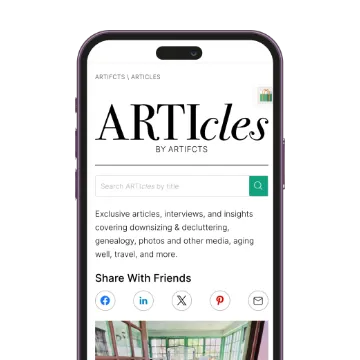As we kick off a brand new year, it’s the perfect moment to reflect on how small shifts in our routines can create lasting change. With 2026 underway, many of us are thinking not just about resolutions, but about building habits that genuinely stick and bring more meaning to our everyday lives.
Changing habits isn’t easy — especially when it comes to creating new ways of preserving memories, stories, and the things that matter most. Whether you’re looking to be more intentional about documenting family histories, organizing meaningful items, or simply wanting to make sure important moments aren’t lost, we're here to help.
At Artifcts, we're big fans of the book, Atomic Habits by James Clear, it's a must read in our view because it speaks to all of us no matter our day-to-day way of living.
For example, are you the type of person for whom the moment an item is added to your to-do list you ignore it as though it were written in invisible ink? Or do you sweat that list out until it's done, hopefully as soon as possible, and then cross it off your list with great satisfaction?
Yup, James Clear sees us all and has strategies to help.
In case you haven't read, or have no interest in reading, his book, we've developed some practical strategies and insights to help you turn #HabitChange into lasting practices, and make 2026 the year you preserve what matters most in ways that are simple, sustainable, and personally meaningful.
Read on for tips that will help you shape routines that support your goals — from starting new habits to keeping them — and bring purpose and clarity to how you care for the memories and items you treasure.
Three Habit Strategies for our Artifcts Community
STRATEGY ONE
Like everything else in life, to create new habits, you need to consider first what “rewards” you want from, in this case, Artifcting. Depending on your situation, maybe you identify with one of these, and it will help guide you to the right habit-based approach to Artifcting and what you do with your Artifct once you create it:
- I need to be better organized and in greater control of the ‘stuff’ around me. Consider our 5 Ways to Start Artifcting, room by room, most valuable, most cherished, that closet you hate to open …
- I want to make sure my loved one is not forgotten. Artifcting need not be a solo experience. Create an invite-only circle to share and remember those who you have lost.
- I want to document and share my family history. Invite-only circles on Artifcts are one place to start so that you can invite family in to see heirlooms, but social media groups are often another great source of information, and you can easily share your Artifcts into social media for more fact and family lore gathering.
- I love swapping good stories, laughing and remembering with friends and family. So try sharing an Artifct or two and see how that works for you; add audio or video too so your loved ones can hear your story in your voice.
STRATEGY TWO
Frame Artifcting as a "when" activity so it becomes intentional. The key here is to be very specific!
- "Every Sunday when my husband watches the football game, I'll grab my phone and create two new Artifcts."
- "When I add something into storage, I'll Artifct it first."
- “When I buy something over $100, I will ask myself, “Is this an Artifct?” and Artifct it on the spot (with receipt!) and fill in the full details later.
- "When I unpack my suitcase, I'll Artifct my new mementos along with the photos from the trip."
- "Every Friday when my son brings his art folder home, I’ll Artifct his projects with him while he has an after-school snack.”
STRATEGY THREE
Try out what Clear calls "habit stacking" to incorporate Artifcting into your regular routines and existing habits.
- "Each season when I organize my closet, I'll Artifct any sentimental pieces, and then sort the items into three piles: keep, consignment, or donation."
- "As I review my estate plan each year, I will check that my Artifcts are included in the tangible assets memorandum."
- “As I add an item to my daughter's baby keepsakes box, I will Artifct it. Then I will put the box away immediately.”
- "While we put away the holiday decorations each winter, we will take breaks. During the breaks we’ll Artifct special ornaments, cards, etc.”
The best way to build a new habit is to start small — and start now. Create one Artifct. See how easy it is. No pressure, no perfection required — just one story, one moment, one memory captured.
From there, build a rhythm that works for you, on your schedule. One Artifct a week adds up faster than you might expect. By the end of the year, you’ll have 52 Artifcts, 52 stories, and 52 memories preserved — a meaningful collection of what matters most.
This is how preservation becomes a habit — not a task. Begin today by creating your first Artifct. Happy Artifcting!
###
© 2026 Artifcts, Inc. All Rights Reserved.
Any mistakes in the interpretation of the habits to Artifcting belong to Artifcts. In fact, we would encourage you to download the free habit cheat sheets from the author at atomichabits.com/cheatsheet!














 The first four days of our 12 Days of Artifcts challenge. Objects with stories, your stories!
The first four days of our 12 Days of Artifcts challenge. Objects with stories, your stories!


